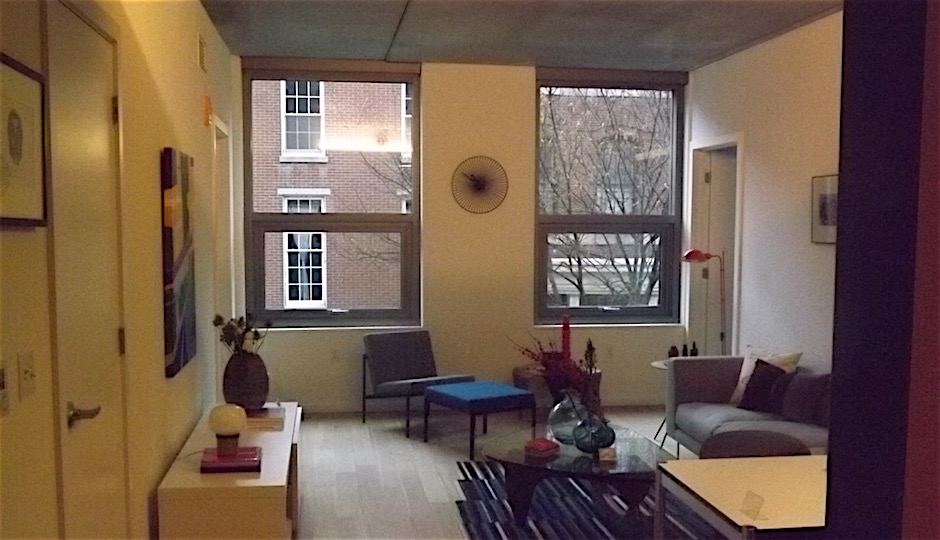Is the High-End Rental Party Over Now That It’s Gained Steam Here?

The developer of The Bridge will get the rents he needs to make his project work, but those who break ground on their projects in the year ahead may find the going tougher. | Photo: Sandy Smith
The real estate sections in local and regional media of late, most definitely including this one, have been awash with stories about new luxury rental developments (like this one, or this one, or this one). Hardly a day passes without an announcement of a new high-end project on the drawing boards or a ribbon-cutting at a newly completed one.
This boom in high-end apartment construction in Philadelphia comes as a similar one nationwide enters its eighth year. That’s about the point where market cycles come to an end as supply begins to outstrip demand, and when that happens, those developers who find themselves standing instead of sitting when the music stops usually have to resort to price cuts to fill vacant units. Those who have announced but not begun new projects end up shelving them until things pick up again (if they pick up in time for the developer to follow through).
A report in The Wall Street Journal last week (paywall) raised the possibility that the music will stop this year. Already, landlords in New York, Los Angeles and Houston are offering discounts and incentives to would-be tenants as a glut of high-end units has developed, and the glut at the top is expected to get bigger this year in even more cities.
Since some of the local market dynamics continue an upward climb, it’s tempting to say that Philadelphia’s luxury rental market hasn’t yet reached its peak. But Lauren Gilchrist, vice president and director of research at JLL, sees signs that it’s getting awfully close if it hasn’t peaked yet.
“A lot of the stock that’s come onto the market has been absorbed by pent-up demand for new housing,” she said, noting that the roughly three-year-long construction boom here followed a prolonged dearth of new rental housing production dating back to the mid-1990s.
Gilchrist noted that about 8,300 new rental housing units have been delivered or are on their way since 2012, and another 3,200 are in the planning stages. “That’s a lot of construction, and one of the dynamics that has allowed it to be successful is that Philadelphia hasn’t seen new projects in several years.”
Gilchrist noted that the city’s high construction costs make it harder for new projects to get off the ground and said that local developers are in effect underwriting about $3.50 per square foot in rental rates for new multifamily buildings.
Another trend that has helped buoy the high-end market locally these past few years is that of city residents trading up to better units.
But she notes that in the past few months, the vacancy rates for new construction, which have hovered near 5 percent, have begun to tick upward a bit. “I’m beginning to hear from developers about significant concessions being offered to new tenants,” she said. “Absorption has slowly begun not to keep pace with the delivery of new units.”
Gilchrist doesn’t see the bursting of a bubble on the horizon here, but she does see the high-end market softening in the near term: “Projects not yet in the development pipeline may be riskier than they were a year ago.”
Let’s just hope that this doesn’t mean we will be staring at a patch of grass and weeds at the northwest corner of Rittenhouse Square for another decade plus.
Follow Sandy Smith on Twitter.
Updated Jan. 12, 6:32 a.m., to correct information about per-square-foot rates.


